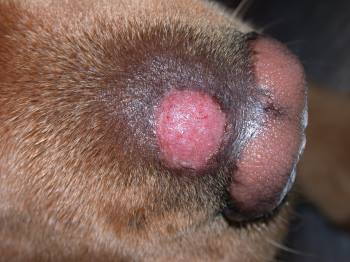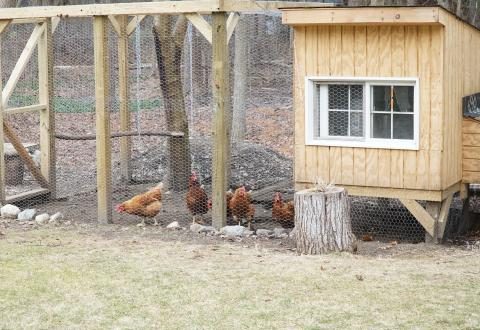
What is microsporia in dogs, why does it occur and how is it treated
Most pet owners do their best to keep their pets sick as little as possible. However, they do get sick from time to time. The reason for this may be viruses, parasites or fungi, from which even vaccinations do not save. Microsporia is considered a fairly common disease in dogs. What is this trouble?
What is microsporia in dogs
This is a fungal disease that affects the skin and all its layers. Caused by the fungus microsporia. It affects all living on earth, including people. In the common people, this disease is called ringworm. A healthy dog can become infected as a result of direct contact with a sick animal or while walking. The spores of recovered animals can survive for a long time on the grass or in the soil, and a healthy dog picks them up easily.
This fungus reproduces by spores, so catching ringworm is very easy. The fungus does not die under the influence of high temperatures and from disinfectants, therefore, if the bedding or dog care items are not well treated, there is a high probability of re-infection.
fungus spores may be viable for about two months. However, they do not like direct sunlight and die from them within a few hours. They also do not tolerate the light of a quartz lamp, dying within thirty minutes.
You can get sick with microsporia at any time of the year, especially puppies suffer from this. Microspores that penetrate the skin cells begin to multiply actively, releasing toxins and enzymes. This leads to the fact that loosening of the keratins of the stratum corneum begins and superficial inflammation. All this contributes to the fact that wool begins to fall out due to lack of nutrition. When the fungus penetrates the skin, dermatitis or even a microabscess can occur.
Symptoms of the disease
Microsporia in dogs can manifest itself in quite a variety of ways. Basically, lesions are localized at the base of the tail, on the limbs, head near the ears and are rounded spots of irregular shape. The fungus can even infect the toes of a dog’s paws. Skin affected by fungus begins to blush and thicken. Wool abruptly loses its healthy appearance, and its hairs seem to stick together. There is severe itching, the dog begins to comb the sore spot, and as a result, the disease covers other parts of the body.
Microsporia often occurs in animals that have:
- Hormonal imbalance.
- Incorrect metabolism.
- Lack of vitamins A and C.
Microsporia can occur in different forms:
- Superficial.
- Deep.
- Erased.
- Hidden.
The latter form is most common in dogs over a year old. Directly all forms are found in younger animals. If the disease begins to progress, then allergic reactions occur. Treatment in this case is carried out with antihistamines.
At the very beginning of the development of the disease, the skin is not yet inflamed and has a normal appearance. As microsporia progresses, crusted spots appear that begin to peel off.
The superficial form of ringworm is the most common and is characterized by hair loss with bald patches. Delayed treatment provokes the addition of a secondary infection.
The deep form has pronounced signs. The skin is covered with a crust, spots are formed small and large. Small ones often merge into one large lesion, but this form is very rare.
Treatment of microsporia
To make a correct diagnosis, laboratory research by two methods.
- The first method is that broken hairs are taken from the damaged area of uXNUMXbuXNUMXbthe skin and the scales are scraped off.
- The second method allows you to distinguish ringworm from scab. The dog is brought into a dark room and irradiated with a mercury-quartz lamp. If it is microsporia, then under the influence of the drug, the hairs affected by spores will stand out in an emerald color against a dark background.
Ringworm treatment is long and very difficult. The dog must be kept in a separate room and constantly cleaned so that family members do not become infected.
Every day, the animal should be treated with antifungal drugs, lubricating the affected skin with binary iodine solution and 10% salicylic alcohol. Iodine monochloride also helps. During the first three days the sore spot is impregnated with a 3 – 5% solutionwithout removing the crust. After that, the affected area is washed with soapy water and cleaned. In the future, the skin is lubricated with a 10% solution.
The veterinarian may prescribe antibiotics. 0,25% trichocetin helps very well. It is applied in the form of a suspension to the diseased skin of the dog every 6-8 days. Together with it, one more antibiotic should be given inside – griseofulvin. Conduct several courses for 20 days, with a break of 10 days. It is recommended to inject microderm or vakderm intramuscularly.
Very effective drugs such as zoomikol, vedinol, cipam or black walnut ointments. Puppies are best treated with homeopathic remedies (traumeel, engistol). They are used until complete recovery.
Even if the dog is completely cured, if the room is not cleaned enough, it may get sick again. Therefore, the entire apartment should be treated with a solution of 2% formaldehyde and 1% sodium hydroxide. In addition, the animal must be under the supervision of a veterinarian for another 45 days, avoiding contact with sources of infection.





